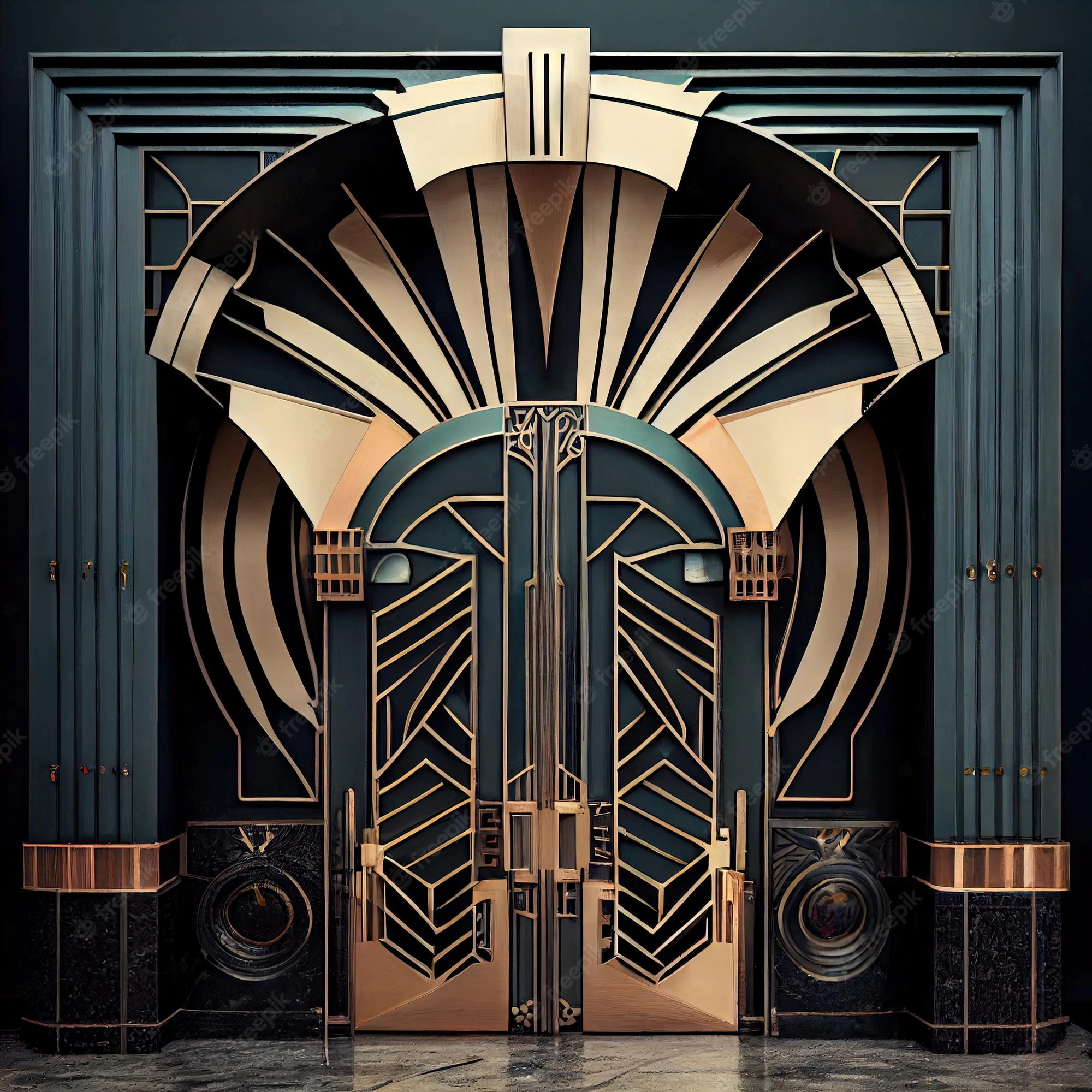 |
||||
|
Art Deco
Art Deco is a prominent art movement that emerged in the 1920s and 1930s, particularly in Europe and the United States. It is characterized by its use of bold geometric shapes, rich colors, and luxurious materials, as well as its fascination with technology, modernity, and exoticism. Art Deco was heavily influenced by a variety of artistic styles, including Cubism, Futurism, and Constructivism, as well as the decorative arts of ancient cultures such as Egypt and Persia. It was also influenced by the Industrial Revolution and the rise of mass production, which allowed for the production of intricate designs at a lower cost. The movement is often associated with the glamour and luxury of the Roaring Twenties and the Jazz Age, and it was widely embraced in architecture, fashion, and interior design. Many iconic landmarks, such as the Chrysler Building in New York City and the Palais de Chaillot in Paris, were built in the Art Deco style. Art Deco was also popular in the realm of decorative arts, including furniture, jewelry, and fashion. Designers such as Coco Chanel, Jeanne Lanvin, and Elsa Schiaparelli created fashion designs that emphasized geometric shapes, bold colors, and luxurious materials. While Art Deco declined in popularity during the 1940s and 1950s, it has experienced a resurgence in recent years, particularly in the realm of interior design and home decor. Its influence can also be seen in various contemporary art movements, including Pop Art and Neo-Expressionism. See also: Tamara De Lempicka The Glorious History of Art Deco Architecture
Art Deco, a distinctive architectural style that emerged in the early 20th century, captivated the world with its geometric forms, sleek lines, and lavish ornamentation. Originating in France just before World War I, Art Deco quickly spread across the globe, becoming a symbol of glamour, modernity, and progress. This article delves into the fascinating history of Art Deco architecture, exploring its influences, key features, and enduring legacy. Origins and Influences: Art Deco emerged as a response to the ornate and intricate styles of the late 19th century, such as Beaux-Arts and Art Nouveau. It drew inspiration from a diverse range of sources, including ancient civilizations, exotic cultures, and contemporary technological advancements. The style was influenced by the rapid industrialization and social change of the early 20th century, as well as the fascination with speed, luxury, and the machine age. Birth and Development: The term "Art Deco" itself originated from the 1925 Exposition Internationale des Arts Décoratifs et Industriels Modernes held in Paris. The exhibition showcased the new aesthetic movement that would come to define the era. While the roots of Art Deco can be traced back to the preceding years, the exhibition acted as a catalyst for its international popularity. Key Features and Characteristics: Art Deco architecture is characterized by its symmetrical and streamlined designs, often incorporating geometric shapes, sunburst motifs, and stepped forms. The style celebrates the use of luxurious materials such as marble, stainless steel, chrome, and glass. Elaborate decorative elements like intricate metalwork, stylized flora and fauna, and elaborate murals adorned Art Deco buildings. The integration of new technologies, such as electric lighting and air conditioning, was also a hallmark of the style. Global Spread and Iconic Buildings: Art Deco quickly spread across the globe, influencing architects and designers in Europe, the Americas, Asia, and beyond. Some of the most iconic Art Deco buildings can be found in cities like New York, Miami, Paris, Mumbai, and Shanghai. Notable examples include the Chrysler Building and the Empire State Building in New York City, the Miami Beach Architectural District, the Palais de Tokyo in Paris, and the Marine Drive Promenade in Mumbai. Art Deco in Different Sectors: Art Deco permeated various sectors, including residential, commercial, and public buildings. Its influence extended to interior design, furniture, jewelry, fashion, and even transportation. From luxurious ocean liners to grand movie palaces, Art Deco became synonymous with elegance and opulence. Decline and Revival: The popularity of Art Deco waned in the years following World War II as modernist and postmodernist architectural styles gained prominence. Many Art Deco buildings were demolished or fell into disrepair. However, a revival of interest in the style occurred in the 1960s, leading to the preservation and restoration of several Art Deco landmarks. Today, Art Deco continues to inspire architects and designers, and its influence can be seen in contemporary buildings and the aesthetics of popular culture. Legacy and Significance: Art Deco left an indelible mark on the architectural landscape of the 20th century. Its fusion of modernity and tradition, its emphasis on craftsmanship and luxury, and its bold and timeless designs continue to captivate admirers around the world. The style's legacy is celebrated through preservation efforts, museum exhibitions, and the recognition of Art Deco buildings as UNESCO World Heritage sites. Final Thoughts: Art Deco architecture stands as a testament to the creativity and innovation of the early 20th century. Its distinctive aesthetic and opulent designs continue to inspire and captivate people, reminding us of a time when architecture was a true expression of modernity and artistic vision. The legacy of Art Deco endures, ensuring that its influence will continue to shape the architectural landscape for generations to come.
|
|
|||
|
|
||||
|
|
||||

